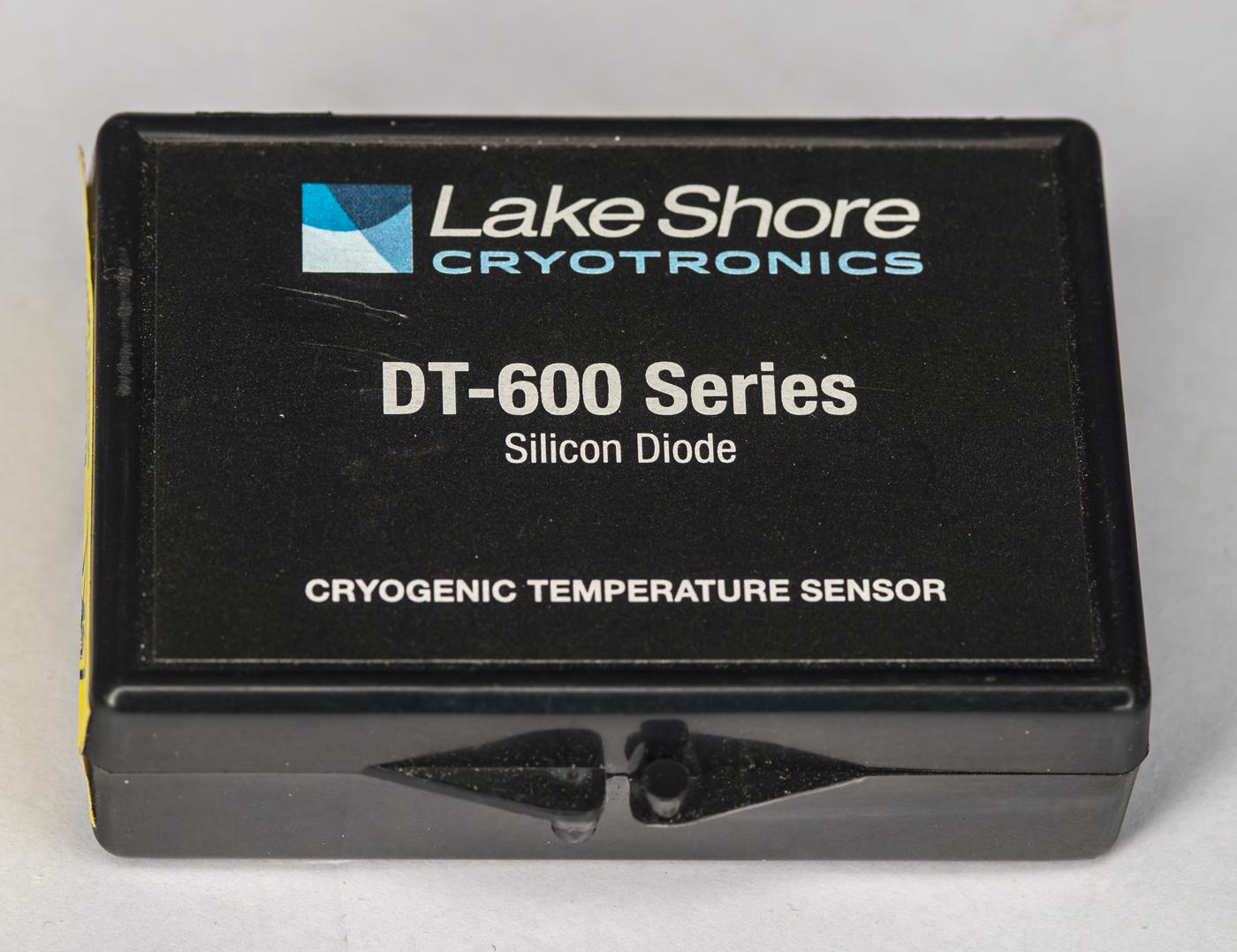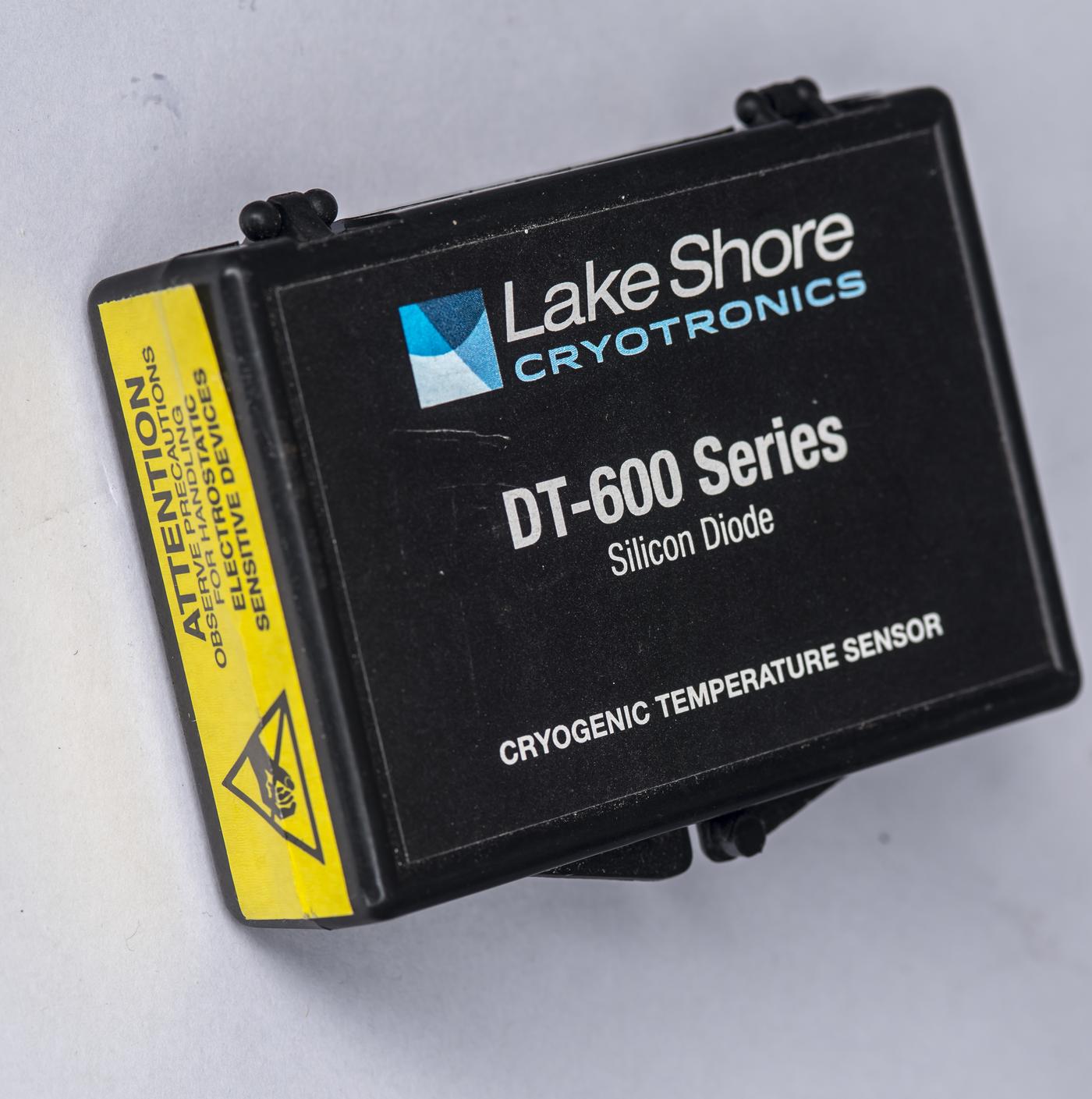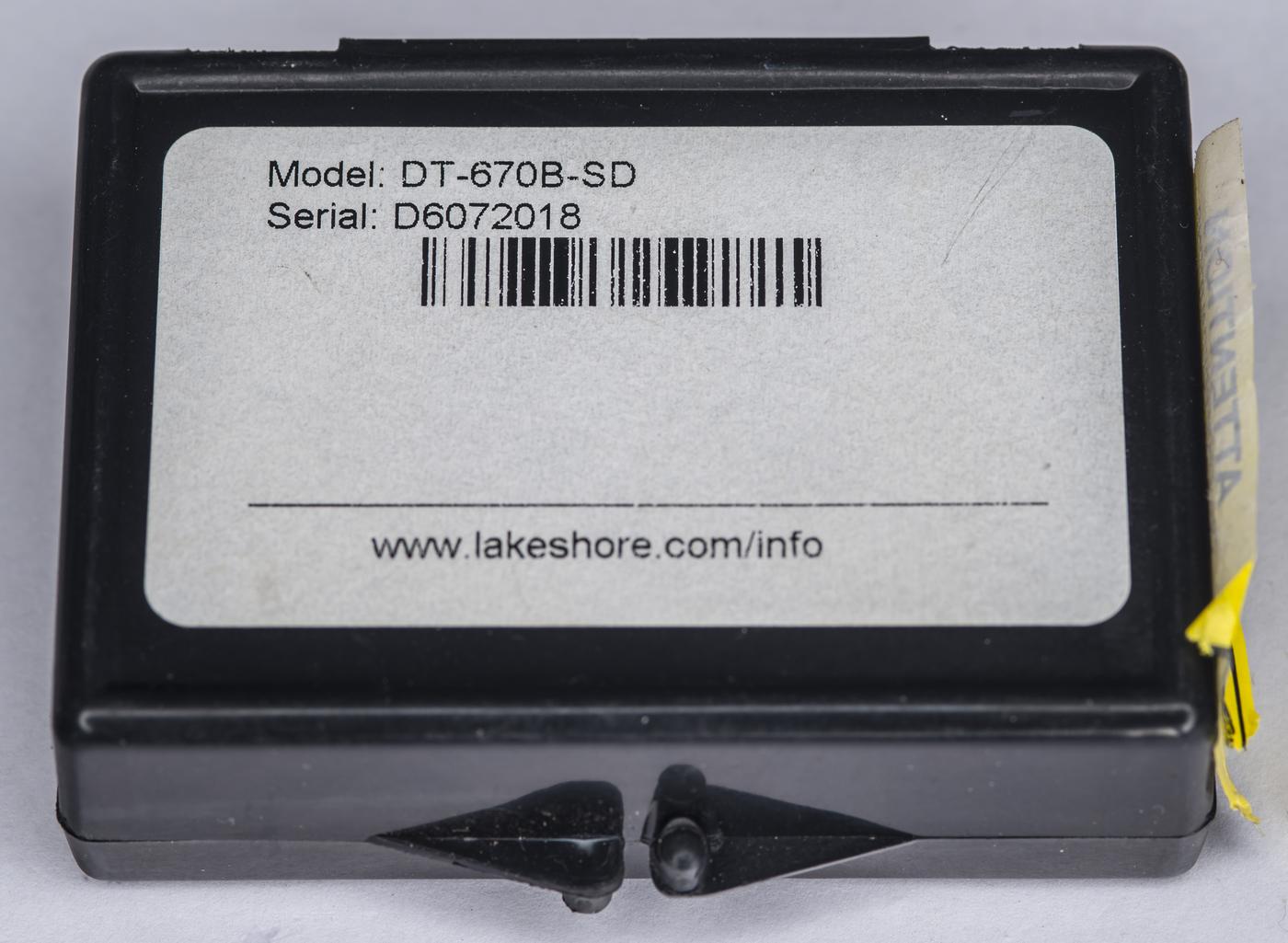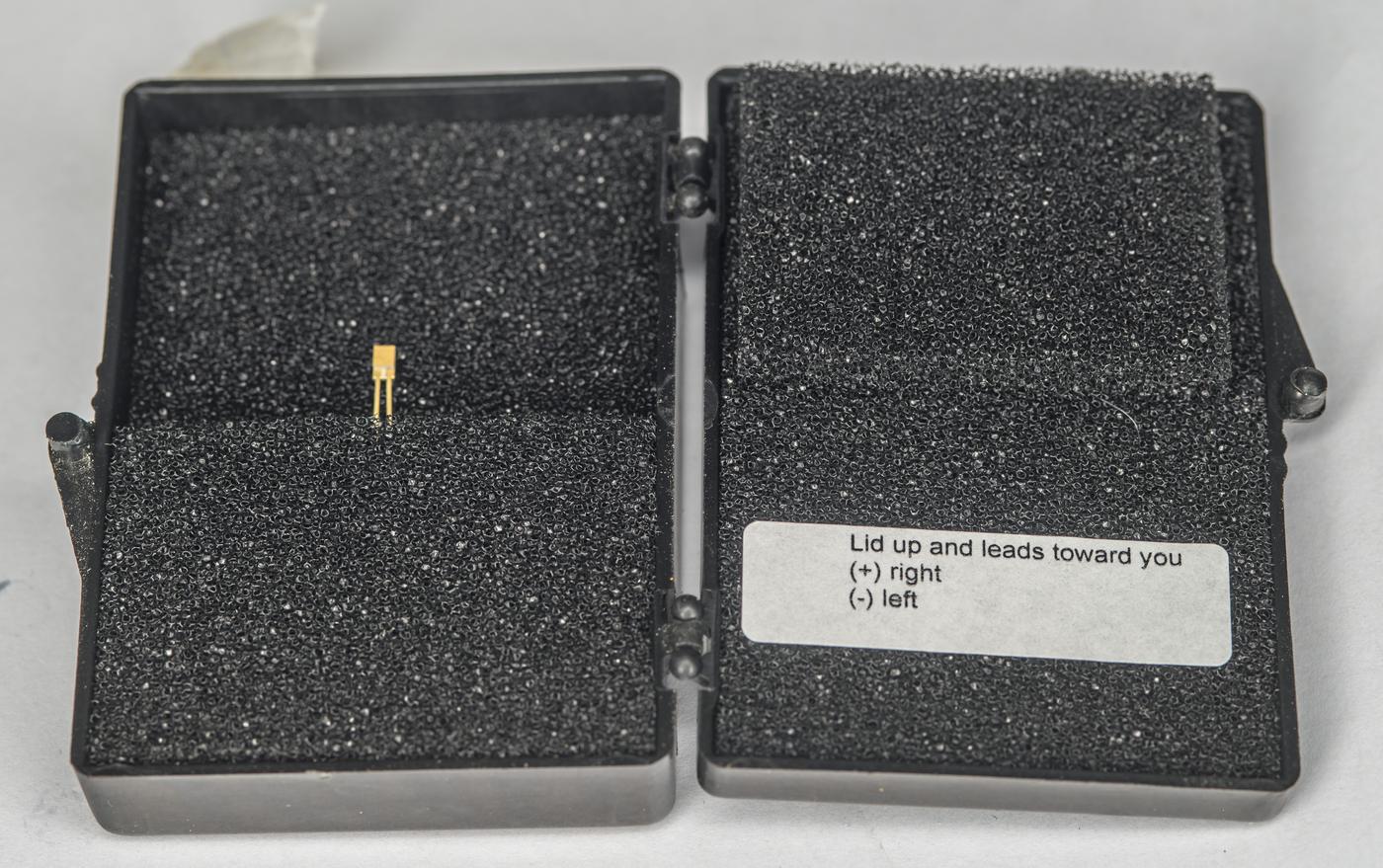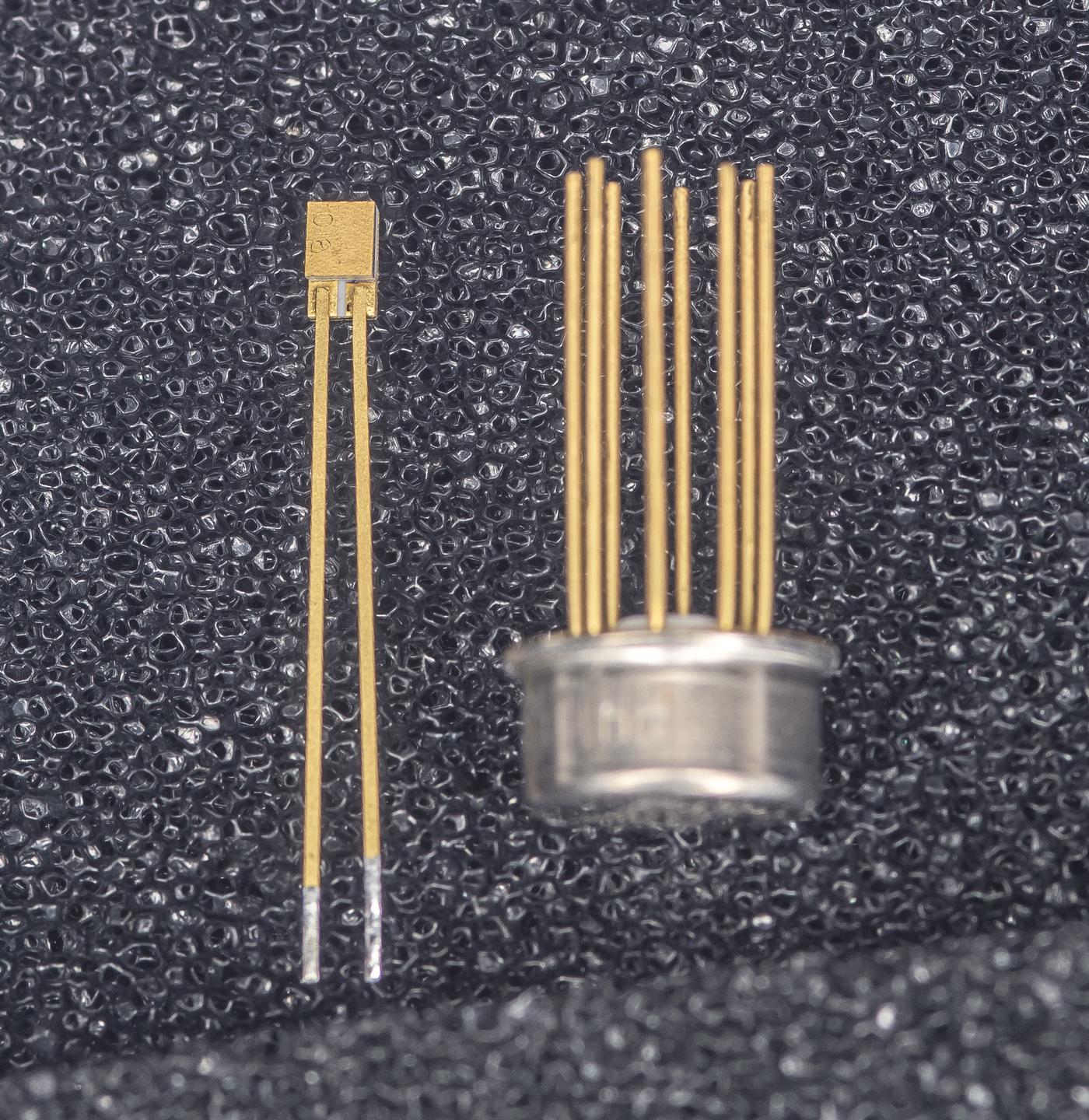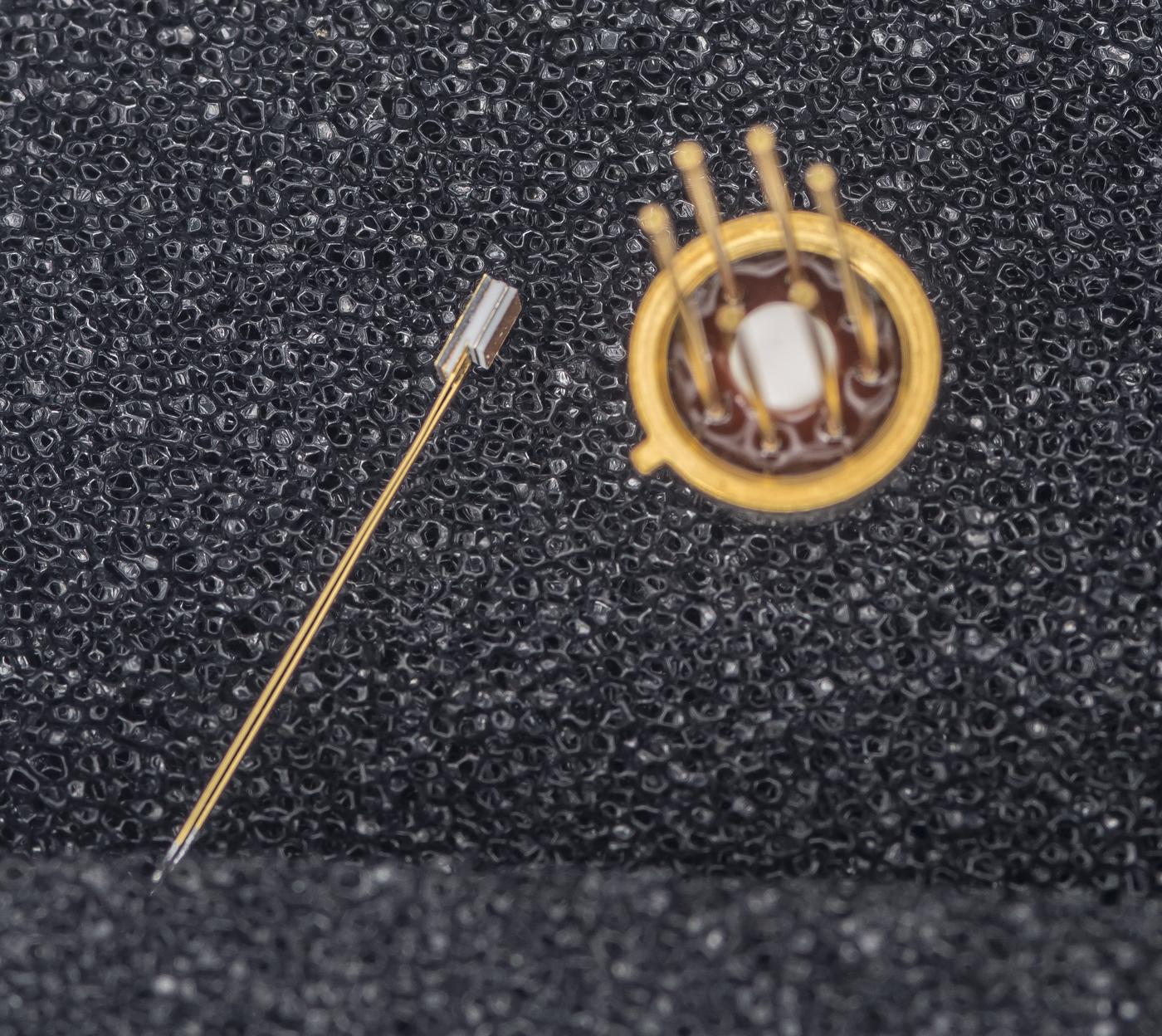After completing first runs with xDevs.com cryostat under vacuum the need for cryogenic temperature measurement with known uncertainty is pressing the schedule. So I’ve decided to add one more sensor into collection and future comparisons with cryogenic temperature range measurements. Common types of sensor elements for such applications are silicon diodes, thermistors and thermocouples.
We already looked at few example sensors from Scientific Instruments earlier and now it is time to look at more famous LakeShore Cryotronics DT-670 . DT-670 is a popular sensor for cryogenic applications and available in various form-factors since start of production in early year 2000.
Sensor was purchased from secondary market used, without any calibration history or data. Hopefully it is still good and functional, but for now we’ll just take a brief look.
Lake Shore Cryotronics DT-670 sensor datasheet
Diode arrived in ESD-safe plastic box with conductive foam and some ESD warning labels. As of today (December 2023) base price for DT-670-SD is $218 USD + additional $36-143 depending on package option + additional $328-$584 for specific calibration. As result cheapest calibrated sensor would be DT-670-SD with 70K – 325K calibration for about $546 USD per piece and most expensive is DT-670-CU-HT-1.4H with 1.4K to 500K calibration for $945 USD. LakeShore also offers uncalibrated sensors for few hundred dollars less in case customer has in-house capability to calibrate at low temperatures.
Compared to this diode price $100/pcs for a something like LTZ1000A is not that bad anymore, so everything is relative. Products designed for cryogenics are generally quite expensive because of low volume production and lot of expensive verification steps in calibration. :)
I’ve got sensor with serial number D6072018 but trying to enter that into online calibration data lookup on Lakeshore website just gives “need a valid serial” error message. Entering known valid sensors (for example from actual photos of cryogenic systems with DT-670’s installed) still gave error, so perhaps only special calibrated sensors S/Ns are stored in that system.
Opening the box reveals beautiful gold-plated diode that measures just 3.175 × 1.905 mm with thickness about 1.08 mm. Sensor has two thin flat foil leads for electrical connections, each 0.38 mm wide, 0.1mm thick and 20 mm long. Leads are made out of Kovar and brazed to bond pads at the package. My sensor has 018 scibed on the top metallized cap surface, somewhat matching serial number on the box.
Mounting this sensor is not trivial task either, with recommended LakeShore custom spring loaded clamp. This clamp has P/N DT-670-CO. The clamp holds the SD sensor package in contact with the surface and also allows the sensor to be easily changed or replaced. A thin layer of Apiezon® N Grease (≤0.055 mm) or a flat 100% indium preform should be used between the sensor and mounting surface to enhance thermal contact. The spring prevents crushing the sensor. Alternatively sensor can be soldered with indium that melts at +156 °C or attached with varnish or similar epoxy suitable for target application.
Internally sensor has a transistor used as a diode with base-to-collector PN-junction. Bare die is nominally 0.4 × 0.43 × 0.18 mm. SD package has sapphire base with alumina body and top cover to guarantee low outgassing and compatibility with UHV applications in temperature range from 1K to 500K. Sensor designed to be operated at constant forward current around 10 µA and can be measured with a typical sensitive DMM. For my experiments I’ll use LakeShore 331 Temperature controller that is designed to support DT-670 sensors natively. The devices within the series are sufficiently uniform that all devices are interchangeable to a standard response curve, so hopefully we can get better temperature data even without calibration for nearest future.
There is also very interesting and detailed paper by Samuel Scott Courts explaining details of DT-670 design and performance validation results. From this paper we can learn that at Lakeshore Calibration Facility, each diode measured using a 10 µA excitation at approximately 70 temperature points spanning the 1.4–330 K temperature range. Calibration instrumentation included an Agilent model 3458A digital voltmeter, a Keithley model 224 current source. All this was compared with Guildline Model 9300 standard resistors from 10 Ω to 1 MΩ in decade steps, an Lake Shore model 340 temperature controller, and a Keithley model 702 switching mainframe with model 7067 low-thermal EMF scanner cards system. Resulting uncertainties ranged from better than ±10 mK to about ±35 mK.
Stay tuned and let us know your feedback on this post! Discussion about this and related stuff is also welcome in comment section or at our own IRC chat server: xdevs.com (port six-zero-ten-zero, channel: #xDevs.com) or via e-mail.
Projects like this are born from passion and a desire to share how things work. Education is the foundation of a healthy society - especially important in today's volatile world. xDevs began as a personal project notepad in Kherson, Ukraine back in 2008 and has grown with support of passionate readers just like you. There are no (and never will be) any ads, sponsors or shareholders behind xDevs.com, just a commitment to inspire and help learning. If you are in a position to help others like us, please consider supporting xDevs.com’s home-country Ukraine in its defense of freedom to speak, freedom to live in peace and freedom to choose their way. You can use official site to support Ukraine – United24 or Help99. Every cent counts.
Modified: Dec. 19, 2023, 5:48 a.m.

